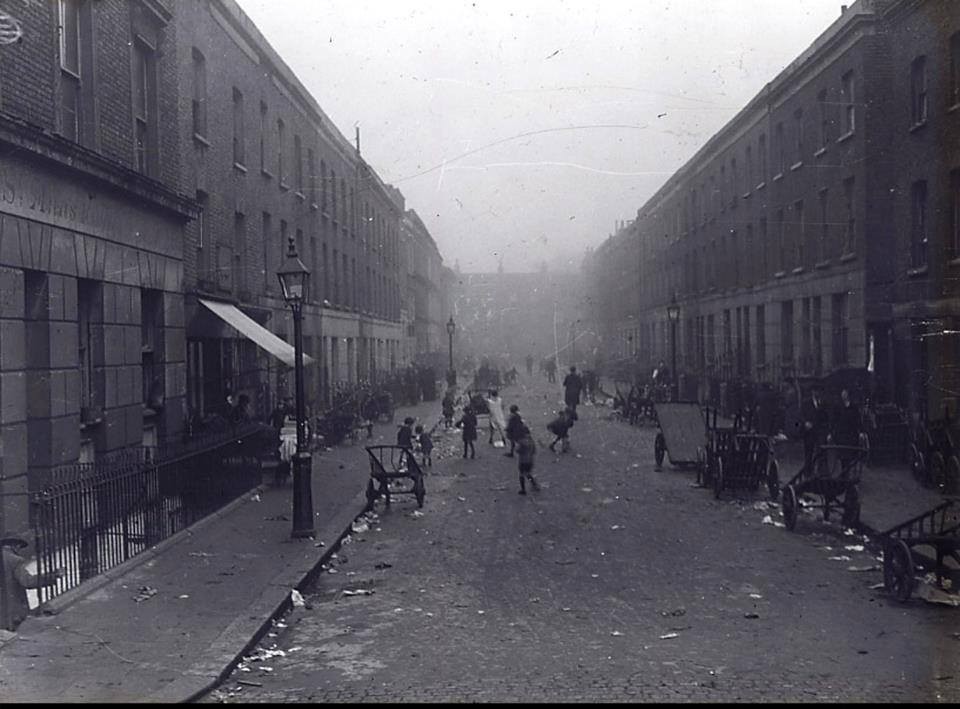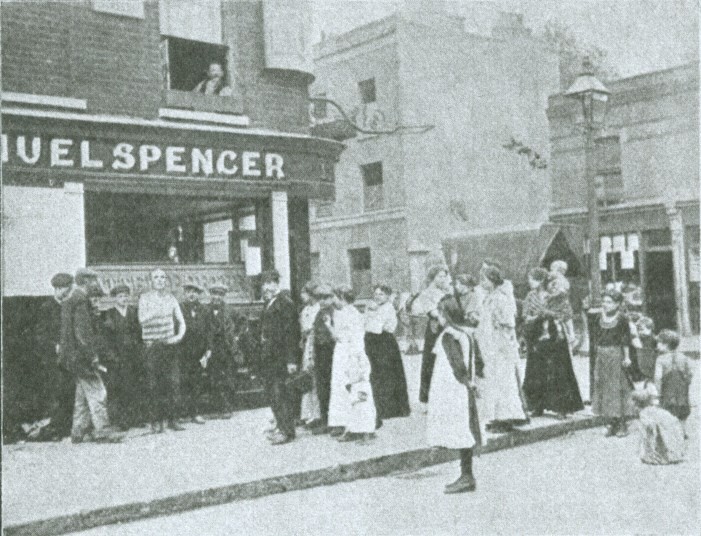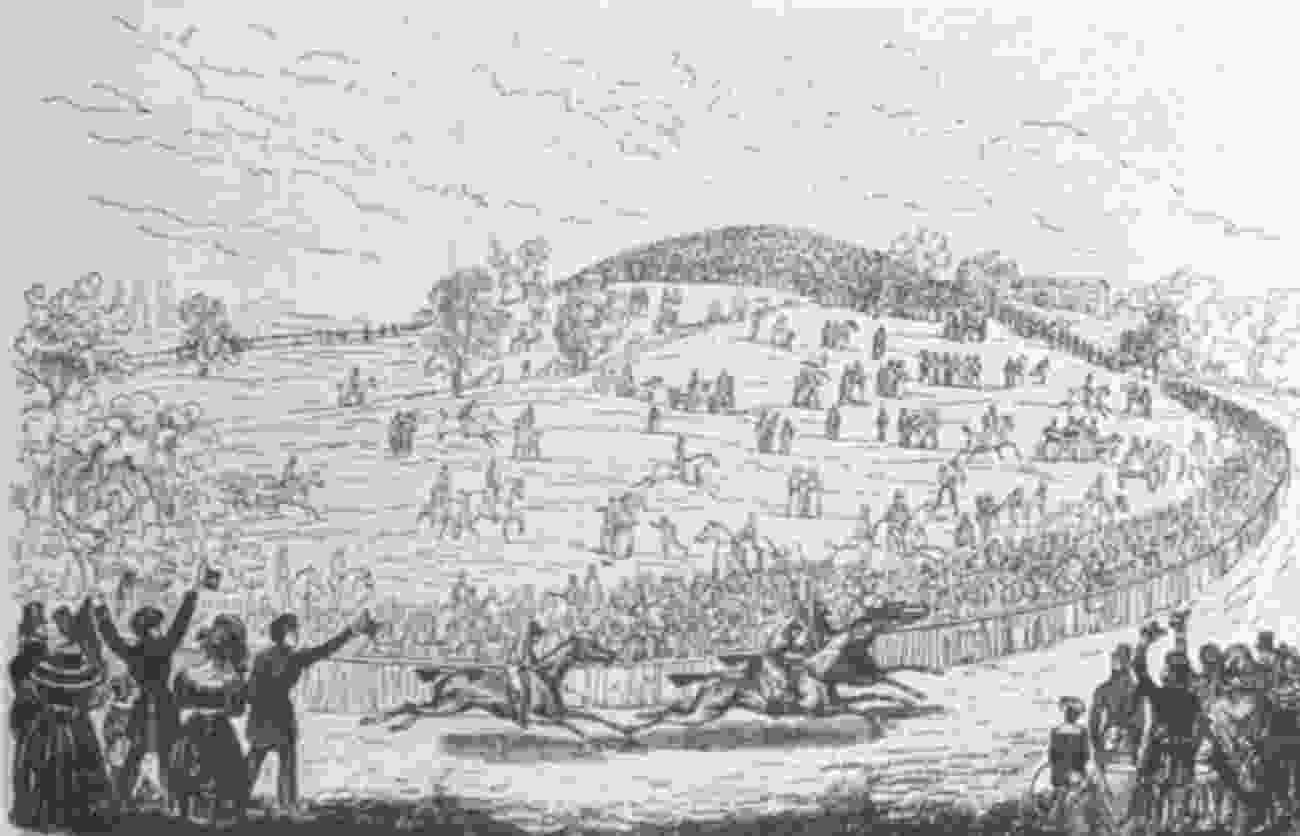
Ruston Mews, W11
Road in/near Notting Dale, existing between 1865 and now.
 | Ruston Mews, W11 Road in/near Notting Dale, existing between 1865 and now. |
| HOME | · | ARTICLE | · | MAPS | · | STREETS | · | BLOG | · | CONTACT US |
| MAP YEAR: | 1750 | 1800 | 1810 | 1820 | 1830 | 1860 | 1900 | 1950 | 2024 | Show map without markers |
| TIP: To create your own sharable map, right click on the map | ||||||||||
| Main source: | Ruston Mews Association |
| Further citations and sources |
| Click here to explore another London street We now have 666 completed street histories and 46834 partial histories Find streets or residential blocks within the M25 by clicking STREETS |
| CONTRIBUTIONS TO THE LOCALITY |
  Roy Batham Added: 7 Jan 2022 05:50 GMT | Batham Family (1851 - 1921) I start with William Batham 1786-1852 born in St.Martins Middlesex. From various sources I have found snippets of information concerning his early life. A soldier in 1814 he married Mary Champelovier of Huguenot descent By 1819 they were in Kensington where they raised 10 children. Apart from soldier his other occupations include whitesmith, bell hanger and pig breeder. I find my first record in the 1851 English sensus. No street address is given, just ’The Potteries’. He died 1853. Only one child at home then George Batham 1839-1923, my great grandfather. By 1861 he is living in Thomas St. Kensington with his mother. A bricklayer by trade 1871, married and still in Thomas St. 1881 finds him in 5,Martin St. Kensington. 1891 10,Manchester St. 1911, 44 Hunt St Hammersmith. Lastly 1921 Census 7, Mersey St. which has since been demolished. Source: Batham/Wiseman - Family Tree Reply |
  Tom Vague Added: 9 Sep 2020 14:02 GMT | The Bedford family at 3 Acklam Road (1860 - 1965) From the 19th century up until 1965, number 3 Acklam Road, near the Portobello Road junction, was occupied by the Bedford family. When the Westway construction work began the Bedfords sold up and moved to south London. In the early 1970s the house was taken over by the North Kensington Amenity Trust and became the Notting Hill Carnival office before its eventual demolition. Anne Bedford (now McSweeney) has fond memories of living there, although she recalls: ‘I now know that the conditions were far from ideal but then I knew no different. There was no running hot water, inside toilet or bath, apart from the tin bath we used once a week in the large kitchen/dining room. Any hot water needed was heated in a kettle. I wasn’t aware that there were people not far away who were a lot worse off than us, living in poverty in houses just like mine but families renting one room. We did have a toilet/bathroom installed in 1959, which was ‘luxury’. ‘When the plans for the Westway were coming to light, we were still living in the house whilst all the houses opposite became empty and boarded up one by one. We watched all this going on and decided that it was not going to be a good place to be once the builders moved in to demolish all the houses and start work on the elevated road. Dad sold the house for a fraction of what it should have been worth but it needed too much doing to it to bring it to a good living standard. We were not rich by any means but we were not poor. My grandmother used to do her washing in the basement once a week by lighting a fire in a big concrete copper to heat the water, which would have been there until demolition. ‘When we moved from number 3, I remember the upright piano that my grandparents used to play �’ and me of sorts �’ being lowered out of the top floor and taken away, presumably to be sold. I used to play with balls up on the wall of the chemist shop on the corner of Acklam and Portobello. We would mark numbers on the pavement slabs in a grid and play hopscotch. At the Portobello corner, on one side there was the Duke of Sussex pub, on the other corner, a chemist, later owned by a Mr Fish, which I thought was amusing. When I was very young I remember every evening a man peddling along Acklam Road with a long thin stick with which he lit the streetlights.’ Michelle Active who lived at number 33 remembers: ‘6 of us lived in a one-bed basement flat on Acklam Road. When they demolished it we moved to a 4-bed maisonette on Silchester Estate and I thought it was a palace, two toilets inside, a separate bathroom that was not in the kitchen, absolute heaven.’ Reply |
  Susan Wright Added: 16 Sep 2017 22:42 GMT | Ada Crowe, 9 Bramley Mews My Great Grandmother Ada Crowe was born in 9 Bramley Mews in 1876. Reply |
  Norman Norrington Added: 28 Dec 2020 08:31 GMT | Blechynden Street, W10 I was born in Hammersmith Hospital (Ducane Rd) I lived at 40 Blecynden Street from birth in 1942 to 1967 when I moved due to oncoming demolition for the West way flyover. A bomb fell locally during the war and cracked one of our windows, that crack was still there the day I left. It was a great street to have grown up in I have very fond memories of living there. Reply |
  john ormandy Added: 20 Mar 2021 17:30 GMT | Blechynden Street, W10 Went to school St Johns with someone named Barry Green who lived in that St. Use to wait for him on the corner take a slow walk an end up being late most days. Reply |
  Norman Norrington Added: 8 Jun 2021 08:08 GMT | Blechynden Street, W10 Lived here #40 1942-1967 Reply |
  David James Bloomfield Added: 13 Jul 2021 11:54 GMT | Hurstway Street, W10 Jimmy Bloomfield who played for Arsenal in the 1950s was brought up on this street. He was a QPR supporter as a child, as many locals would be at the time, as a teen he was rejected by them as being too small. They’d made a mistake Reply |
  Richard Added: 12 Jul 2022 21:36 GMT | Elgin Crescent, W11 Richard Laitner (1955-1983), a barrister training to be a doctor at UCL, lived here in 1983. He was murdered aged 28 with both his parents after attending his sister’s wedding in Sheffield in 1983. The Richard Laitner Memorial Fund maintains bursaries in his memory at UCL Medical School Source: Ancestry Library Edition Reply |
  Richard Added: 12 Jul 2022 21:39 GMT | Elgin Crescent, W11 Richard Laitner lived at 24 Elgin Crescent Source: Ancestry Library Edition Reply |
  Added: 19 Jun 2022 16:58 GMT | Runcorn Place, W11 Runcorn place Reply |
  Christian Added: 31 Oct 2023 10:34 GMT | Cornwall Road, W11 Photo shows William Richard Hoare’s chemist shop at 121 Cornwall Road. Reply |
| LATEST LONDON-WIDE CONTRIBUTIONS TO THE PROJECT |
  Wendy Added: 22 Mar 2024 15:33 GMT | Polygon Buildings Following the demolition of the Polygon, and prior to the construction of Oakshott Court in 1974, 4 tenement type blocks of flats were built on the site at Clarendon Sq/Phoenix Rd called Polygon Buildings. These were primarily for people working for the Midland Railway and subsequently British Rail. My family lived for 5 years in Block C in the 1950s. It seems that very few photos exist of these buildings. Reply |
  Steve Added: 19 Mar 2024 08:42 GMT | Road construction and houses completed New Charleville Circus road layout shown on Stanford’s Library Map Of London And Its Suburbs 1879 with access via West Hill only. Plans showing street numbering were recorded in 1888 so we can concluded the houses in Charleville Circus were built by this date. Source: Charleville Circus, Sydenham, London Reply |
  Steve Added: 19 Mar 2024 08:04 GMT | Charleville Circus, Sydenham: One Place Study (OPS) One Place Study’s (OPS) are a recent innovation to research and record historical facts/events/people focused on a single place �’ building, street, town etc. I have created an open access OPS of Charleville Circus on WikiTree that has over a million members across the globe working on a single family tree for everyone to enjoy, for free, forever. Source: Charleville Circus, Sydenham, London Reply |
  Charles Added: 8 Mar 2024 20:45 GMT | My House I want to know who lived in my house in the 1860’s. Reply |
  NH Added: 7 Mar 2024 11:41 GMT | Telephone House Donald Hunter House, formerly Telephone House, was the BT Offices closed in 2000 Reply |
  Paul Cox Added: 5 Mar 2024 22:18 GMT | War damage reinstatement plans of No’s 11 & 13 Aldine Street Whilst clearing my elderly Mothers house of general detritus, I’ve come across original plans (one on acetate) of No’s 11 & 13 Aldine Street. Might they be of interest or should I just dispose of them? There are 4 copies seemingly from the one single acetate example. Seems a shame to just junk them as the level of detail is exquisite. No worries if of no interest, but thought I’d put it out there. Reply |
  Diana Added: 28 Feb 2024 13:52 GMT | New Inn Yard, E1 My great grandparents x 6 lived in New Inn Yard. On this date, their son was baptised in nearby St Leonard’s Church, Shoreditch Source: BDM London, Cripplegate and Shoreditch registers written by church clerk. Reply |
  Vic Stanley Added: 24 Feb 2024 17:38 GMT | Postcose The postcode is SE15, NOT SE1 Reply |
| LOCAL PHOTOS |









